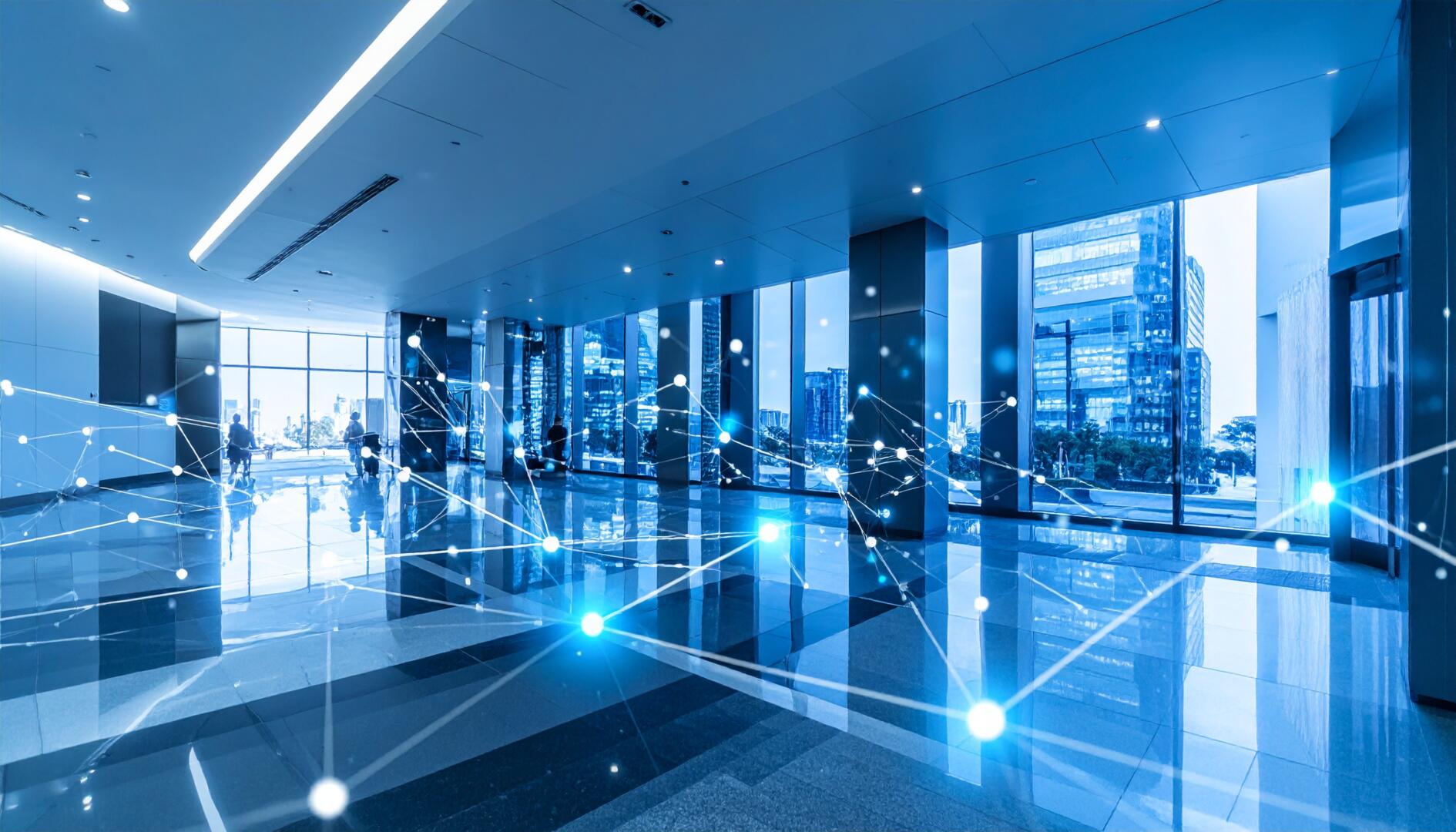The commercial real estate landscape is experiencing a revolutionary transformation, and digital lobby directories have emerged as the cornerstone of modern smart building infrastructure. The smart building market is projected to grow from USD 143.0 billion in 2025 to USD 548.5 billion by 2032, exhibiting a CAGR of 21.2%, making digital lobby directories not just a luxury but an essential component for any forward-thinking organization.
Digital lobby directories represent far more than upgraded signage – they’re sophisticated digital ecosystems that transform how visitors, employees, and building managers interact with commercial spaces. As we navigate through 2025, these intelligent systems are becoming the gateway to enhanced user experiences, operational efficiency, and brand differentiation.
At PearlQuest, we’ve been thrilled by the potential these technologies hold for revolutionizing building management and visitor engagement. Through our content research and industry analysis, we’ve witnessed firsthand how organizations are leveraging these systems to create memorable first impressions while streamlining their operations.
The Evolution of Building Navigation: From Static to Smart
Traditional building directories – those static, often outdated boards with removable letters – belong to a bygone era. Today’s digital lobby directories integrate seamlessly with building management systems, offering real-time updates, personalized wayfinding, and interactive experiences that adapt to each visitor’s needs.
In 2025, digital building directories leverage AI for personalized wayfinding, integrate AR for interactive navigation, and offer real-time updates on meeting room availability and tenant announcements, creating an entirely new paradigm for building interaction.
Why Digital Lobby Directories Are No Longer Optional
The shift toward digital lobby directories isn’t driven by technology trends alone – it’s a response to fundamental changes in how we work, visit, and interact with commercial spaces. Solutions have improved visitor engagement by 40% and information dissemination efficiency by 35% in various corporate and hotel lobbies, demonstrating tangible returns on investment.
Modern visitors expect seamless, intuitive experiences. When someone enters your building, they shouldn’t need to decipher outdated directories or wait for reception assistance. Digital directories provide instant access to information, reducing wait times and creating positive first impressions that reflect your organization’s commitment to innovation.
Key Features Transforming Visitor Experiences
Real-Time Information Management
Smart directories use digital technology to deliver real-time information, help visitors navigate, and reduce pressure on front-desk staff. These systems automatically update tenant information, meeting room availability, and event schedules, ensuring visitors always receive accurate, current data.
Integrated Way finding Solutions
Modern digital directories go beyond simple floor plans. They provide turn-by-turn navigation, accessibility route planning, and can even send directions to visitors’ mobile devices for continued guidance throughout the building.
Multi-Language Support and Accessibility
Digital building directories offer voice-activated controls, adjustable screen heights, high-contrast displays, ensuring inclusive experiences for all visitors regardless of language preferences or accessibility needs.
Brand Integration and Customization
These systems serve as powerful branding platforms, displaying company logos, promotional content, news feeds, and emergency notifications while maintaining consistent visual identity throughout the building.
The Business Impact: Beyond Visitor Convenience
Organizations implementing digital lobby directories report significant operational benefits. Reception staff can focus on high-value interactions rather than providing basic directional assistance. Building managers gain valuable analytics about visitor patterns, peak usage times, and popular destinations within the facility.
From a marketing perspective, these systems offer unprecedented opportunities for internal brand reinforcement and visitor engagement. Companies can showcase their culture, achievements, and services through dynamic content that updates automatically based on schedules, events, or real-time metrics.
The return on investment extends beyond immediate operational savings. Buildings with modern digital infrastructure typically command higher rental rates, attract quality tenants, and demonstrate lower vacancy rates compared to properties with outdated systems.
Integration with Smart Building Ecosystems
Digital lobby directories don’t operate in isolation – they’re integral components of comprehensive smart building platforms. Seamless integration with access control, HVAC, lighting, and security systems is standard, allowing for a unified and efficient building management experience.
This integration enables advanced features like pre-registered visitor check-ins, automatic climate control adjustments based on occupancy patterns, and security protocol automation. When visitors interact with the directory, they’re actually engaging with the building’s entire intelligent infrastructure.
Future-Proofing Your Building Investment
The trends shaping smart building technologies starting in 2025 are not just about efficiency or cost-saving; they’re about transforming how our occupants and staff interact with them. Organizations that invest in digital lobby directories today are positioning themselves for continued relevance in an increasingly digital-first world.
The technology continues evolving rapidly, with emerging features including biometric recognition, predictive analytics, and IoT sensor integration. Buildings equipped with adaptable digital infrastructure can easily incorporate these advances without complete system overhauls.
As content creators at PearlQuest, we’re motivated by stories of organizations that have transformed their visitor experiences through strategic technology adoption. These success stories consistently highlight digital lobby directories as catalysts for broader digital transformation initiatives.
Implementation Considerations for Marketing and Brand Teams
When evaluating digital lobby directory solutions, marketing teams should consider how these systems align with broader brand strategy and customer experience goals. The interface design, content management capabilities, and integration options directly impact brand perception and visitor satisfaction.
Content management becomes crucial – these systems require regular updates, seasonal campaigns, and emergency communication capabilities. Marketing teams need platforms that allow quick content deployment without technical expertise, ensuring brand messaging remains current and relevant.
Analytics capabilities should align with marketing measurement frameworks, providing insights into visitor engagement patterns, content effectiveness, and peak interaction periods. This data proves invaluable for optimizing both digital content and physical space utilization.
The Competitive Advantage of Early Adoption
Organizations implementing digital lobby directories in 2025 gain significant competitive advantages. They demonstrate technological leadership, attract quality tenants and employees, and create memorable visitor experiences that differentiate them from competitors still relying on traditional building management approaches.
The technology learning curve is relatively minimal, but the impact on brand perception and operational efficiency is substantial. Early adopters often become case studies for industry publications, further enhancing their reputation as innovative leaders.
Digital lobby directories represent essential infrastructure for modern commercial buildings, not optional upgrades. As we progress through 2025, these systems will become increasingly sophisticated, offering unprecedented opportunities for visitor engagement, operational efficiency, and brand differentiation.






